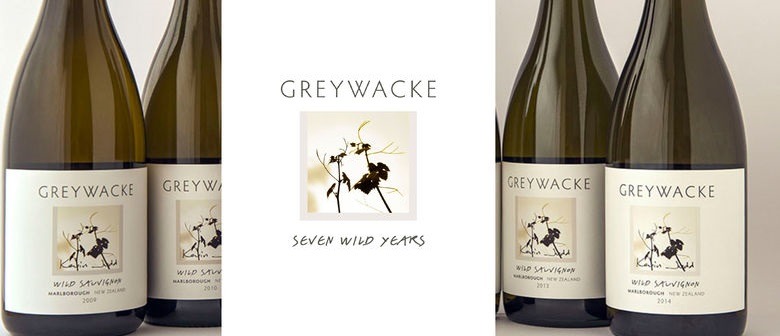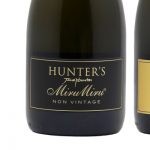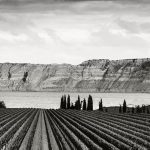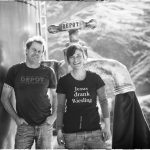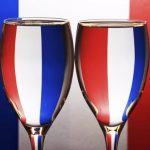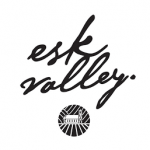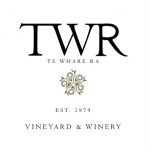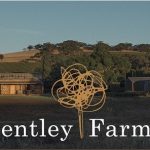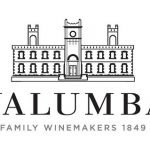Greywacke Seven Years Wild 2017 | Tasting Review
This tasting celebrated Greywacke’s seven vintages of their “wild’ Sauvignon Blanc. Established by Kevin and Kimberley Judd in 2009, after Kevin’s 25 vintages as head wine-maker and General Manager at Cloudy Bay. During his time at Cloudy Bay, Kevin not only crafted the world’s most recognizable Sauvignon Blanc (and label), but he continued tweaking and refining the style. After recruiting his mate James Healy to Cloudy Bay, James introduced wild yeast ferments, firstly with Chardonnay then with Kevin developing Cloudy Bay’s alternative style Sauvignon, Te Koko. When Kevin established his own label, he remained working alongside the old Cloudy Bay team – James Healy and Ivan Sutherland (vineyard owner and viticulturalist) who had themselves established their own label Dog Point. Kevin makes his wines at the Dog Point winery, but his wines are of quite a different style to both Dog Point and Cloudy Bay.
Kevin’s Wild Sauvignon Blanc style is refined and minerally, based on the dry white Bordeaux style for texture and age-ability. This tasting was part of a nation-wide ‘tour’ hosted by Kevin, Kimberley and assistant wine-maker Richard Ellis. It has to be said that I was a little nervous at first holding a tasting based solely around alternate style Sauvignon Blanc but was very pleased to see that yes, there was an interest in not only exploring this style but seeing it develops over a period of time. Interestingly, the Wild Sauvignon Blanc makes up 25% of Greywacke’s Sauvignon Blanc production, highlighting the demand from mainly off-shore. We in New Zealand tend to be quite conservative in our Sauvignon Blanc drinking, treating it as a commodity wine rather than a complex vinous experience. If this tasting is anything to go by, it is time we broadened our tasting horizons and explored these styles of wine more.
We started with the Sauvignon Blanc 2016 before moving on to 2 flights of the aged Wild Sauvignon Blancs; 2009 to 2014 vintages, then the yet-to-be-released 2015, finishing with the current releases of Chardonnay and Pinot Noir. The verticals of the Wild Sauvignon Blanc were a revelation to most, especially with regard to how well they had aged and drank. They are about as far away as you can get from the simple, fruity Sauvignons that dominate the shelves. These wines should be far more popular than they are – It may just well be that we don’t know when and how to enjoy this style of wine. These are wines designed to be best with food.
Kevin’s on-going contribution to the development and understanding of our most important grape variety should not be under estimated. In his quiet, unassuming manner he remains at the forefront of winemaking of this variety and the opportunity to taste these wines from a series of vintages was a pleasure.
Greywacke Sauvignon Blanc 2016
Purity is the first word that comes to mind here. A restrained, minerally style with passionfruit, leafy herbal flavours. Finessed with a beautiful fine line of acidity that carries the flavours long into the palate.
The Wild Sauvignon Blancs
Kevin’s style of “alternative’ Sauvignon Blanc is to offer integration of winemaking influence and finesse. Quite different to Te Koko’s big creamy malo-lactic influenced style and Dog Point’s more reductive one. Fruit is sourced from their own Greyawacke vineyard and others throughout the Wairau Plains and Southern Valleys. A mix of hand picked and machine harvested fruit is very lightly pressed and wild yeast fermented in mainly older (93%) oak with just 7% in new oak. Fermentation usually takes 11-12 months with around 50-79% malo-lactic then the wine is further aged in stainless steel on full lees for around 6 months. Interestingly the tasters preference was for the older wines and it seems that these wines don’t start showing their best until around 5-6 years after harvest and are likely to age well for up to 15 years. These are all wines with flavour complexity; layers of texture…
Greywacke Wild Sauvignon Blanc 2009
This was the first vintage at Greywacke. Looking remarkably youthful, this has flavours of sweet fruits – almost pineapple, tropical-like with an array of scents from a fresh herb garden. This wine is still as fresh as a daisy with several years of life ahead.
Greywacke Wild Sauvignon Blanc 2010
The subtle smokey character of wild fermentation and lees aging comes through a bit more on this wine. This has dried herb flavours and is a bit drier to taste.
Greywacke Wild Sauvignon Blanc 2011
The most ‘reductive’ of all the wines, with noticeable funky, struck match characters. The palate has power with the zesty herbal notes fully integrated into the long palate.
Greywacke Wild Sauvignon Blanc 2012
This is more green fruited, the almost green bean flavours reflecting the cooler vintage. Probably the most mature of the wines.
Greywacke Wild Sauvignon Blanc 2013
Here there’s a bit of flintiness with ripe fruit flavours. There is plenty of palate presence with energy and persistence. Very good.
Greywacke Wild Sauvignon Blanc 2014
The current release. This has a balance of richness with the smokey flint character making a presence along with stonefruit flavours.
Greywacke Wild Sauvignon Blanc 2015
Probably the wine with the most potential. 2015 was a very good vintage and this shows in the ripe fruit characters and opulence on the palate. Still a bit gawky with oak noticeable. About to be released this is a wine to seek out, put in your cellar and watch it evolve.
Greywacke Chardonnay 2014
Whilst Sauvignon Blanc is the cut and trust of Greywacke, let us not forget the other varieties.
The Greywacke style is evident. This is a mix of predominately Mendoza clone fruit with Clone 95. Wild fermented in 20% new oak with 100% malo-lactic. Plenty of citrus fruits along with hints of smoke/flint and fresh fig.
Greywacke Pinot Noir 2014
From the clay based soils of the Coastal Southern Valleys, organically farmed. Aged in 30-40% new French oak. There is a lot of attention to detail when the fruit comes to the winery with intensive hand sorting (the most boring, but essential job at the winery says Richard). Savoury spiced plum, dark and brooding. Although only 20% whole bunch this is still evident of the palate, the charry, smokey oak also evident. Really does need time. The elements are all there.

 NZ-Wide
NZ-Wide 
